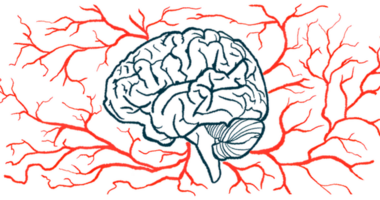Novel immune cell strategy found to reverse disease in MS mice
Microparticles that activate Tregs show benefit in MS mouse model

Microparticles that activate regulatory T-cells, or Tregs, an immune cell type with anti-inflammatory properties, reversed the accumulation of physical disability due to multiple sclerosis (MS) in a mouse model of the neurodegenerative disorder, a new study shows.
Use of the novel strategy even cured some of the animals.
“We developed a method for ‘tipping the balance’ of the T cells reaching the central nervous system from effectors to regulatory T cells, or T regs, that modulate the immune system and have been shown to prevent autoimmune reactions,” Giorgio Raimondi, PhD, a professor at Johns Hopkins University School of Medicine and co-author of the study, said in a press release.
The study’s researchers called it “a promising platform for treatment of autoimmune diseases” like MS.
Titled “Bioengineered particles expand myelin-specific regulatory T cells and reverse autoreactivity in a mouse model of multiple sclerosis,” the study was published in Science Advances.
Study seeks to activate Tregs for immune tolerance
The immune system sees the world in black and white — anything that’s part of the body should be left alone, and anything that’s not is assumed to be a threat and attacked. The immune system’s ability to tell the difference between what is or is not a normal part of the body is known as immune tolerance.
As such, autoimmune diseases like MS are basically a breakdown of immune tolerance. Instead of leaving the body’s own healthy tissue alone, immune cells attack healthy tissue as though it’s a threat. In MS, the immune system specifically attacks the myelin sheath, a fatty covering around nerve fibers that helps them send electric signals.
Regulatory T-cells, known as Tregs for short, are a type of immune cell with a critical function for regulating tolerance. Like all T-cells, Tregs have specialized receptors that will bind to a specific protein. For most T-cells, when the receptor binds its target, it will trigger the cell to attack. But when a Treg’s receptor binds to its target, it prompts the cell to secrete anti-inflammatory signaling molecules.
Under normal conditions, these Treg receptors recognize the body’s own healthy tissue and help to prevent inflammatory cells from attacking — in other words, these cells help to maintain the immune tolerance that is lost in diseases like MS.
Now, a team of researchers from the Johns Hopkins School of Medicine, in Maryland, constructed microparticles with the aim of activating Tregs to help restore tolerance in MS. Very simplistically, these tiny particles contained a combination of molecules designed to bind specifically to Treg receptors and deliver a fragment of myelin protein, a molecule that activated Tregs, and another that dampened the function of other T-cells.
The goal was to trigger an anti-inflammatory response that would dampen the autoimmune attack on the myelin sheath that drives MS.
The scientists conducted a series of tests using cells in dishes to show that these particles, dubbed tolerogenic microparticles or Tol-MPs, activated Tregs as designed. Then, the particles were tested in mice with experimental autoimmune encephalitis (EAE), a common mouse model of MS.
Scientists successful in enhancing growth of Tregs
The results showed that early treatment with Tol-MPs delayed the onset of EAE symptoms and reduced disease severity. The most profound effect was seen when some of the particles were administered directly via injection into lymph nodes — immune organs that are a main site for T-cell activation.
“We inject the loaded microparticles near lymphatic tissues to stimulate the production and growth of T regs and facilitate their travel to the central nervous system via the lymphatic system,” said Jordan Green, PhD, a study co-author and a professor of biomedical engineering at Hopkins.
When the Tol-MPs were used to treat mice with ongoing EAE, the microparticle treatment “immediately reversed disease,” the researchers wrote.
We found we could enhance the growth of T regs while simultaneously reducing the number of effectors, resulting in reversal of the MS-like symptoms in 100% of the mice, and even more exciting, achieving a full recovery in 38% — in other words, more than a third were cured of their disease.
After a few weeks, most mice given a dummy treatment had clinical scores of three or higher, reflecting greater motor dysfunction. By comparison, about two-thirds of mice given Tol-MPs every five days had a clinical score of one, showing minor motor impairments.
The rest of the mice, meanwhile, had a score of zero, reflecting no detectable abnormalities. Mice treated with Tol-MPs also had markedly higher levels of Tregs.
“We found we could enhance the growth of T regs while simultaneously reducing the number of effectors, resulting in reversal of the MS-like symptoms in 100% of the mice, and even more exciting, achieving a full recovery in 38% — in other words, more than a third were cured of their disease,” Raimondi said.
Johns Hopkins files patents for new technology
The scientists stressed that further research is needed to characterize these microparticles. But they said this study overall “demonstrates that Tol-MPs show great promise as a safe and effective preventative and therapeutic treatment for this mouse model of EAE and potentially for MS and other autoimmune diseases.”
The team also proposed that their microparticle platform could be used to help induce tolerance in other autoimmune diseases. The idea would be to switch out the part of the microparticle that mimics myelin with other autoimmune targets.
“The belief is that by simply changing the presented peptide each time, we can target our therapy to tackle a wide variety of autoimmune diseases,” Green said.
“We hope to have a cache of potential therapies ready to go before moving forward to safety and efficacy studies in mice, followed hopefully by human trials,” Green added.
Funding for the study came from grants from the National Institutes of Health and the U.S. Department of Defense. The Juvenile Diabetes Research Foundation also funded the study.
The Johns Hopkins University has filed patents related to the study’s technologies.









